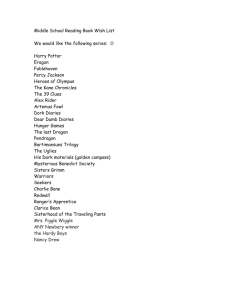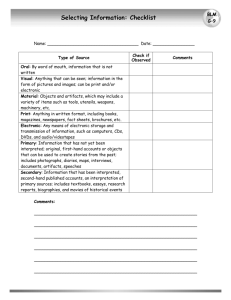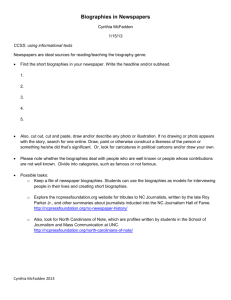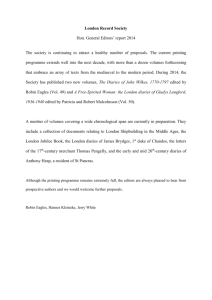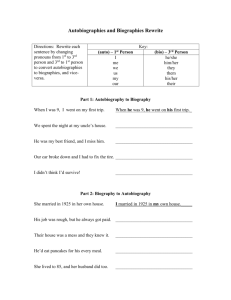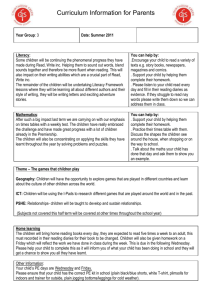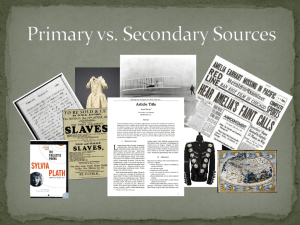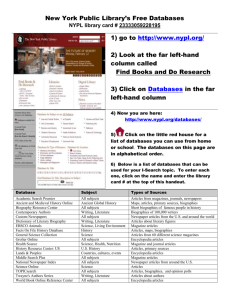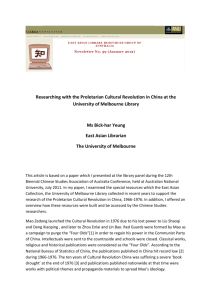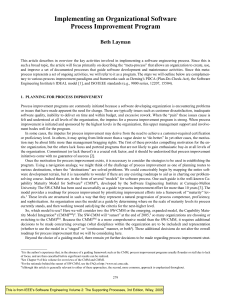Primary and Secondary Sources Lesson Plan
advertisement
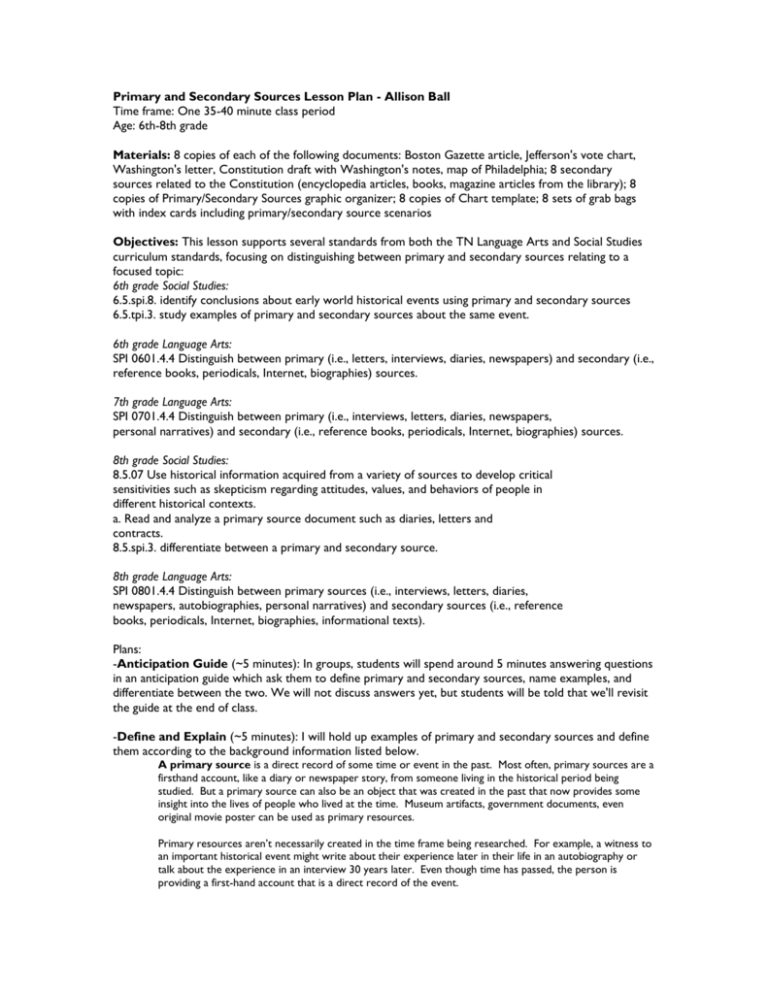
Primary and Secondary Sources Lesson Plan - Allison Ball Time frame: One 35-40 minute class period Age: 6th-8th grade Materials: 8 copies of each of the following documents: Boston Gazette article, Jefferson's vote chart, Washington's letter, Constitution draft with Washington's notes, map of Philadelphia; 8 secondary sources related to the Constitution (encyclopedia articles, books, magazine articles from the library); 8 copies of Primary/Secondary Sources graphic organizer; 8 copies of Chart template; 8 sets of grab bags with index cards including primary/secondary source scenarios Objectives: This lesson supports several standards from both the TN Language Arts and Social Studies curriculum standards, focusing on distinguishing between primary and secondary sources relating to a focused topic: 6th grade Social Studies: 6.5.spi.8. identify conclusions about early world historical events using primary and secondary sources 6.5.tpi.3. study examples of primary and secondary sources about the same event. 6th grade Language Arts: SPI 0601.4.4 Distinguish between primary (i.e., letters, interviews, diaries, newspapers) and secondary (i.e., reference books, periodicals, Internet, biographies) sources. 7th grade Language Arts: SPI 0701.4.4 Distinguish between primary (i.e., interviews, letters, diaries, newspapers, personal narratives) and secondary (i.e., reference books, periodicals, Internet, biographies) sources. 8th grade Social Studies: 8.5.07 Use historical information acquired from a variety of sources to develop critical sensitivities such as skepticism regarding attitudes, values, and behaviors of people in different historical contexts. a. Read and analyze a primary source document such as diaries, letters and contracts. 8.5.spi.3. differentiate between a primary and secondary source. 8th grade Language Arts: SPI 0801.4.4 Distinguish between primary sources (i.e., interviews, letters, diaries, newspapers, autobiographies, personal narratives) and secondary sources (i.e., reference books, periodicals, Internet, biographies, informational texts). Plans: -Anticipation Guide (~5 minutes): In groups, students will spend around 5 minutes answering questions in an anticipation guide which ask them to define primary and secondary sources, name examples, and differentiate between the two. We will not discuss answers yet, but students will be told that we'll revisit the guide at the end of class. -Define and Explain (~5 minutes): I will hold up examples of primary and secondary sources and define them according to the background information listed below. A primary source is a direct record of some time or event in the past. Most often, primary sources are a firsthand account, like a diary or newspaper story, from someone living in the historical period being studied. But a primary source can also be an object that was created in the past that now provides some insight into the lives of people who lived at the time. Museum artifacts, government documents, even original movie poster can be used as primary resources. Primary resources aren’t necessarily created in the time frame being researched. For example, a witness to an important historical event might write about their experience later in their life in an autobiography or talk about the experience in an interview 30 years later. Even though time has passed, the person is providing a first-hand account that is a direct record of the event. Depending on when they originated, all of these could be used as primary sources: diaries, autobiographies, letters or other correspondences, photographs, newspapers, magazines, government documents, maps, movie footage, oral history interviews, museum artifacts, artwork, literature, even music. A secondary source is an account of the past created by someone who wasn’t present at the event. The most obvious example of a secondary source is a textbook. A textbook writer researches hundreds of sources and summarizes them into one short narrative that is quick and easy to read. A secondary source often uses primary sources or even other secondary sources to construct their story. Sometimes, usable primary sources might be found within a secondary source. Some examples of secondary sources are: encyclopedias, biographies, textbooks, current magazines or newspapers that feature stories about the distant past, and most web sites. Primary sources shouldn’t be thought of as better than secondary sources. Either can contain false or misleading statements. A good historian uses both kinds of resources to do research because they each provide different types of information. A primary source provides a direct link from the researcher to a past event. You can think of the search for primary sources like a detective finding clues at the scene of the crime. The detective uses these clues to try to reconstruct an event and guess what really happened. A secondary source, on the other hand, can help researchers summarize a huge amount of information and put it into context. This can be very useful when approaching a complex topic for the first time. Secondary sources can also provide exciting ideas and points-of- view from scholars who have already examined an issue critically. -Sort and Stack (~5 minutes): In groups, students will sort through a stack of index cards and categorize them on the chart located at their table (primary or secondary). Groups will discuss to make decisions together. After 3-4 minutes, we will discuss each example and why it is that type of source. -Artifact Analysis (10 minutes): In groups, students have 7 sources related to the Constitution. These sources are both primary and secondary examples. Students are to view each source, decide the type, and defend their choice in three reasons. The group will note this on their graphic organizer. -Group Share (5 minutes): As a whole group, we will share answers for each document. Each table will share their response for one source, and we will discuss why the response is or is not correct, as well as additional reasons to defend the choice of primary or secondary. -Anticipation Guide, round two (5 minutes): Groups have 3 minutes to revisit their anticipation guide and change any answers. After 3 minutes, we will share as a whole group. Students' exit slip is to tell me one example of a primary source as they leave.
